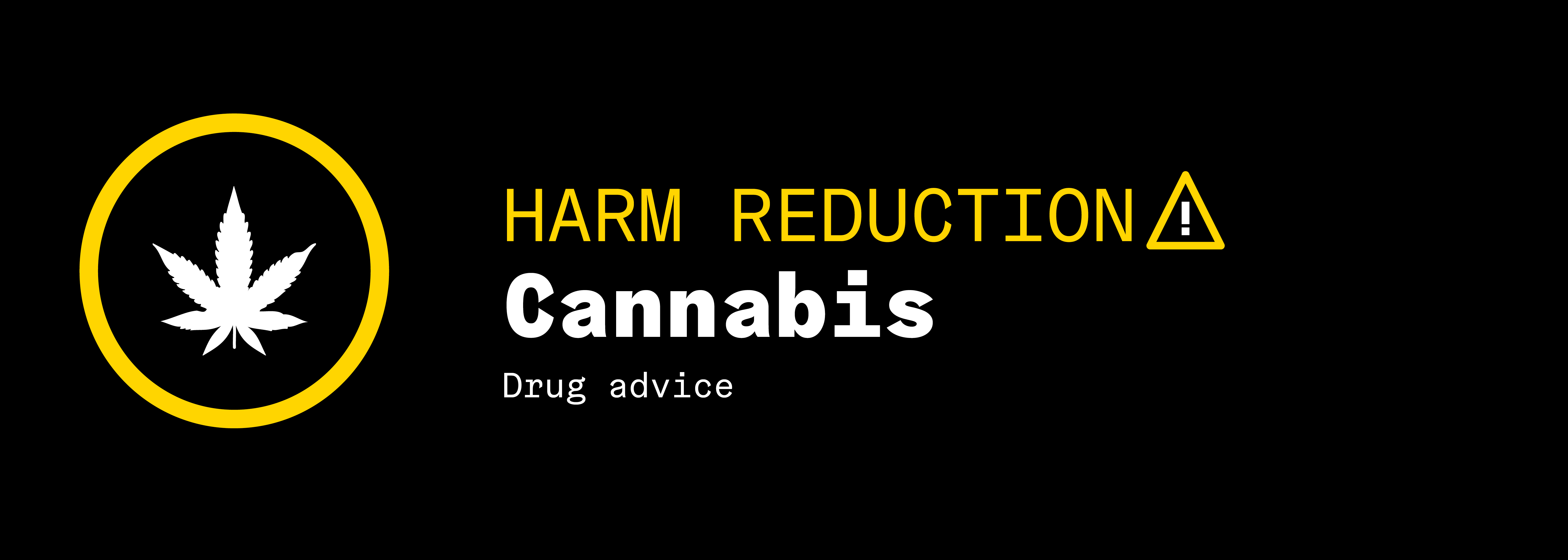
Disclaimer:
Whilst Oxford SU does not condone the use of illegal drugs or the misuse of prescription drugs, we recognise that some students may use drugs during their time at University. We hope that the information provided in this booklet will help readers to be better informed about their/ their friends drug use, the risks posed, how these can be mitigated, and where to seek help for drug use.
Drug use always carries risks:
People cannot use drugs without a risk of being harmed. Oxford SU cannot be held responsible for any harm, however it occurs, in connection with information provided here. We also bear no responsibility for the content of external sites accessed through links provided. Scienti c understanding is always developing, so information here, as anywhere else, is not guaranteed to be valid and new evidence may overturn it. Information provided in this booklet does not explain every possible risk, nor does it provide practical, personalised guidance for drug taking.
If you are worried about your or your friends drug use, you can seek confidential support through the following services:

Student Advice is the only independent advice and information service exclusively available to University of Oxford students.
Advisors are trained to deal with a wide range of issues such as academic appeals, money management, accommodation problems, disciplinary matters, harassment and many other aspects of student wellbeing and welfare.
Student Advice can also signpost students to organisations who o er specialist support, including local substance abuse and addiction services.
How to speak to an Advisor
Email advice@oxfordsu.ox.ac.uk
Drop In
2-4pm Wednesdays (term time only)
Appointments (Telephone or face to face)
Email us or request an appointment via our website oxfordsu.org/advice

Turning Point in Oxfordshire o ers information and advice for alcohol and drug issues. They provide a wide range
of treatment options including harm reduction advice, structured group work programme, activities and one-to-one key working sessions to promote recovery. The Wellbeing Cloud is Turning Point’s dedicated website promoting wellbeing and recovery. It includes some helpful online tools. Take a look and find out more:
www.wellbeing.turning-point.co.uk/ oxfordshire
01865 261 690
Ground Floor, Rectory Centre,
27-29 Rectory Road
Oxford
OX4 1DU
What is Cannabis?
 Cannabis is a psychoactive plant which contains delta- 9-tetrahydrocannabinol (THC), cannabidiol (CBD), and other related drug chemicals. The major psychoactive effects of cannabis are caused by THC. THC activates cannabinoid receptors in the brain. The brain contains naturally occurring cannabinoids (endocannabinoids) and THC acts on the same receptors that would normally be responsive to these chemicals.
Cannabis is a psychoactive plant which contains delta- 9-tetrahydrocannabinol (THC), cannabidiol (CBD), and other related drug chemicals. The major psychoactive effects of cannabis are caused by THC. THC activates cannabinoid receptors in the brain. The brain contains naturally occurring cannabinoids (endocannabinoids) and THC acts on the same receptors that would normally be responsive to these chemicals.
Effects of using Cannabis
The e ects of cannabis are highly variable depending on the strength, method of intake, and many other variables. The same type of cannabis taken in the same way by two di erent people can give two quite different experiences. Everyone reacts to cannabis di erently; some people may respond in a way which they enjoy and some people may dislike the e ects of cannabis.
IMMEDIATE EFFECTS
Tension
Anxiety
Loss of control of thoughts/feelings
Paranoia
Drowsiness
Hallucinations
Raised hart rate
Heart palpitations
Dry mouth
Red eyes
Nausea
Euphoria
Strong appetite
Panic attacks
Dizziness/fainting
Changed perception/awareness
Abstract thoughts/feelings of enlightenment
AFTER-EFFECTS
LONG-TERM EFFECTS
Lung problems: smoking cannabis, especially with tobacco, increases the risk of developing breathing problems and lung cancer.
Depression/ anxiety: Some evidence suggests that cannabis users, especially heavy, long-term users and people who use it regularly during adolescence are more likely to su er depression, or anxiety disorders. It is difficult to be sure that it is the cannabis that actually causes these problems, but the possibility should be taken seriously.
Psychosis: Cannabis can induce hallucinations for some users. Hearing voices, especially if you have paranoid ideas about them, is likely to suggest that you are at higher risk of serious problems, such as triggering underlying psychosis, as a result of using cannabis.
Addiction: Cannabis can be addictive. Cannabis may lift mood and relieve stress, which can make it tempting to use it to deal with the tensions of life. However, using any drug as a short-cut to unwinding and feeling good after a stressful day makes it more likely that you will come to feel reliant on the drug, and become dependent. Although most cannabis users do not become dependent, for those that do it can be particularly di icult habit
to kick, akin to quitting smoking cigarettes. Symptoms of cannabis withdrawal include restlessness, di icultly sleeping, weird dreams and mood swings.
PANIC ATTACKS
If someone starts feeling panicky, the worst thing you can do is sound loud and panicked too. Try to hold eye-contact, maybe hold their hand if you know them, and be calm and soothing, reminding them that the e ects will soon fade. Get them to concentrate on taking long....slow.... breaths. Lying down with raised feet and breathing in and out of a paper bag can help with dizziness. In the very rare event that they do not improve in a few minutes, or if their behaviour could be a risk to themselves or others, you might need to get medical help to prevent injuries or a drawn out traumatic experience.
COMBATTING DIZZINESS AND FAINTING
Unpleasant side e ects become more likely with large amounts and when cannabis is consumed too fast. Cannabis a ects blood pressure and this can cause a horrible rush of dizziness, sickness and fainting. These effects are colloquially known as ‘throwing a whitey’ as the person suddenly becomes pale. If you feel this way, stop ingesting cannabis, lie down, and try to eat or drink something sugary such as soda or chocolate.
Harm reduction:
things to consider
When smoking or eating cannabis, it is easy to take too much cannabis and su er intense negative effects.
WHAT ARE YOU TAKING AND HOW?
Some methods of taking cannabis are more harmful than others. In the UK, it is normal for cannabis users to mix cannabis or hash into a rolled up tobacco cigarette. Taking cannabis in this way puts the user at risk of nicotine addiction, and all the serious harms to the lungs and heart associated with tobacco. Some ways in which you can reduce the harm caused are as follows:
It is an urban myth that using cigarette filters removes the THC from cannabis. Smoking cannabis with filters removes a substantial quantity of the particulates otherwise inhaled when smoking unfiltered tobacco.
Smoking cannabis without tobacco is also a way to reduce harm to the lungs, although it does not eliminate harm done to the lungs entirely.
Using a vaporizer avoids the potential harm of smoke inhalation but does not take away all the risks
Eating cannabis foods or using other means of taking cannabis orally also avoids smoking harms, but greater care is needed to prevent an overly strong experience, especially as it can take an hour or more after initial ingestion for the e ects to become fully apparent.
ARE YOU AWARE OF THE HARMS CANNABIS CAN CAUSE?
It is a priority for current users wishing to minimise their risk of harms to avoid becoming dependent on cannabis. However responsible your intentions, there is always a risk of this, and some people seem to be predisposed genetically to becoming dependent. Increasing tolerance to cannabis (having to smoke more and more to get the desired e ects), is considered a signal of a growing risk of becoming reliant on the drug. Observing your patterns of use can help prevent you only realising a problem has developed when it has become hard to take control again. Being deliberately mindful of your use could help avoid getting to the point where you find that you are rolling a joint out of habit without having really made a decision. Some regular users try to manage the risk of dependence creeping up on them by taking ‘T-breaks’ (the ‘T’ standing for tolerance), where they abstain for a few weeks to keep their use in check and to monitor the extent to which they do or do not crave the drug. Doing this may make it less likely that your habit will slip out of control.
Harm reduction:
combinations to avoid
Mixing cannabis with other drugs makes the e ects on your body and mind even harder to predict and manage.
Alcohol: If you use cannabis with alcohol you are more likely to feel sick and dizzy and su er other negative side-e ects that the drugs can cause.
Cocaine: Combining cannabis and cocaine may increase the likelihood of agitation and paranoia that comes with both drugs.
Medical conditions
Schizophrenia: if you or close relatives have schizophrenia and another serious psychiatric condition, you are at a high risk of triggering serious symptoms by using cannabis.
Anxiety/panic disorders: cannabis can increase the risk of an anxiety/panic attack
Heart conditions: People with heart or blood-pressure problems could face increased risks from cannabis. Schizophrenia: if you or close relatives have schizophrenia and another serious psychiatric condition, you are at a high risk of triggering serious symptoms by using cannabis.
Anxiety/panic disorders: cannabis can increase the risk of an anxiety/panic attack
Heart conditions: People with heart or blood-pressure problems could face increased risks from cannabis.
What to do in an emergency
Symptoms and signs – not all may be present?
drowsiness, loss of coordination and collapse
confusion or hallucinations
altered breathing pattern or breathing difficulty
mood changes including excitability, aggression or depression
pale, cold and clammy skin
nausea or vomiting
seizures
abdominal pain
evidence of poisons, containers, smells, etc
How you can help
1. ASSESS THE PATIENT
Check the level of consciousness. If the patient is not fully conscious and alert, turn them onto their side and ensure they are not left alone.
2. REASSURE THE PATIENT
Talk to the patient in a quiet and reassuring manner.
Sometimes patients may become agitated. Enlist friends or family to calm and reassure the patient. Consider calling the police if the safety of the patient or others becomes threatened.
3. IDENTIFY THE DRUG TAKEN
Ask what the patient has taken, how much was taken, when it was taken, and whether it was swallowed, inhaled or injected.
Look for evidence that might assist the hospital sta with treatment and keep any container, syringe or needle and any vomit to aid analysis and identification.
Some drugs create serious overheating of the body, and if this is noticed, remove unnecessary clothing to allow air to reach the skin surface to assist with cooling.
CALL 999 FOR AN AMBULANCE.